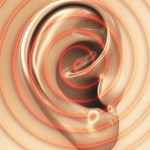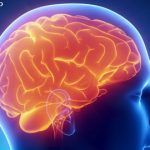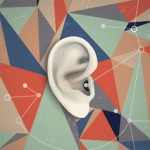Fortunately for patients, the condition is often fully reversible.
Rapidly Progressing Symptoms
The condition is also called autoimmune inner ear disease, autoimmune cochleopathy or immune-mediated cochleovestibular disease. In contrast to defective sound transmission through the external ear, tympanic membrane or middle ear, which has been associated with conductive hearing loss, autoimmune SNHL has been linked to dysfunction in the inner ear, vestibulocochlear nerve or central processing centers of the brain.2
Interestingly, about half of patients report unilateral hearing loss at presentation. Audiological tests, however, demonstrate bilateral, if often asymmetrical, involvement in the overwhelming majority of cases. Although the suite of other symptoms can vary, patients also commonly report tinnitus, aural fullness, generalized imbalance, motion intolerance, ataxia and low-grade vertigo. One important clue is the rapid progression of such symptoms.
“Genetically determined hearing loss produces slowly progressive hearing loss that occurs over months to years. Sudden hearing loss occurs over the course of 24 hours,” Dr. Rubinstein says. “It’s really only autoimmunity that we know of that produces hearing loss in weeks to months.”
Importantly, this hearing loss can accompany other autoimmune symptoms as well, especially the eye inflammation typical of Cogan syndrome in young to middle-aged adults.
Dr. Rubinstein saw several such patients during his residency at Massachusetts Eye and Ear, where David G. Cogan, MD, first described the condition named after him in 1945. The simultaneous and similarly progressing eye and ear symptoms helped link both to an underlying autoimmune disorder. In a review of 60 Cogan syndrome patients seen at the Mayo Clinic in Rochester, Minn., roughly half eventually lost all hearing, although most were successfully treated with cochlear implants.3 Granulomatosis with polyangiitis (GPA) can affect the middle ear and mastoid bone and drive autoimmune inner ear disease as well. A recent review and meta-analysis likewise found that autoimmune SNHL is “highly prevalent” in patients with Sjögren’s disease, with a pooled prevalence of 43%.4
“There are many other autoimmune conditions where it would not be unusual to also see rapidly progressive sensory neural hearing loss,” Dr. Rubinstein says. “However, we also see this absent any known autoimmune diagnosis.”
No patient registry yet exists, although Massachusetts Eye and Ear has a bank of temporal bones donated after death by patients who had been diagnosed with autoimmune inner ear disease in life. “We have a pretty good idea of what the autoimmune inflammatory response in the inner ear looks like, but there’s no direct connection to why it’s rapidly progressive,” says Dr. Rubinstein. Similarly, he says, it’s not yet clear why the inflammatory lesion may be more responsive to corticosteroids later in its course than most other autoimmune central nervous system diseases.


